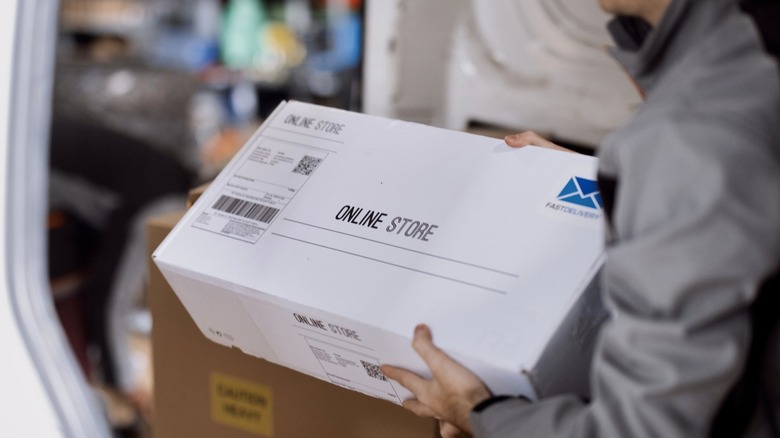How Exactly Do You Ship Chocolate Without It Melting?
Whether you are sending some treats to someone for a holiday or you simply want to share some ruby chocolate you happened upon with fellow fruit lovers, shipping this treat requires careful planning. The most obvious potential problem is that the sweets melt during transit, which can start to happen in temperatures as low as 72 degrees Fahrenheit. If you want to ensure the receiver of your sugary gift gets the product in the condition it was sent in, properly packaging the chocolate is paramount.
There are essentially two packing materials you will need when shipping chocolate: Mylar bubble wrap and cold packs. The cold packs will help the confection remain at a low temperature, but you will want to wrap them in something like newspaper so they don't get condensation onto your confections. The bubble wrap with Mylar coating is vital for keeping that cold where it needs to be: around your chocolate. As an insulator that's often used in transporting temperature-sensitive food and medical supplies, it is nearly as crucial to use as the cold packs themselves.
Whatever size chocolate container you opt to use, plan to purchase a box three times that size. That will allow ample room for the packing materials you need to include to ensure the treats don't melt. Don't be stingy with the bubble wrap, either — the shipping box should be completely full so the sweets can't get jostled around. Broken chocolate might be better than melted, but it isn't ideal.
The day of the week you ship chocolate matters
Timing is also crucial when shipping chocolate, especially in the warmer months of the year. The cold packs will only do so much for so long, so you don't want your sweets traveling for an extended time. You should plan on mailing your chocolate early in the week. If you send it off on a Thursday or later, the box might lie around in a warehouse for a day or so until the shipping company has more employees available during the week to resume deliveries. Overnight shipping is the best option if you are willing to splurge on the price.
It is likewise a good idea to tape your box well, and not just at the top where it closes. Take an extra minute to put tape at all the box seams as well. That will further insulate the box and allow the cold packs to do their best work for as long as possible.
The type of chocolate you send off is another factor. The dark chocolate you would use to make a mole sauce has a higher melting point than a creamier milk chocolate, for instance. White chocolate also has a low melting point, so timing and studious attention to detail when preparing your package are even more essential when shipping it.

